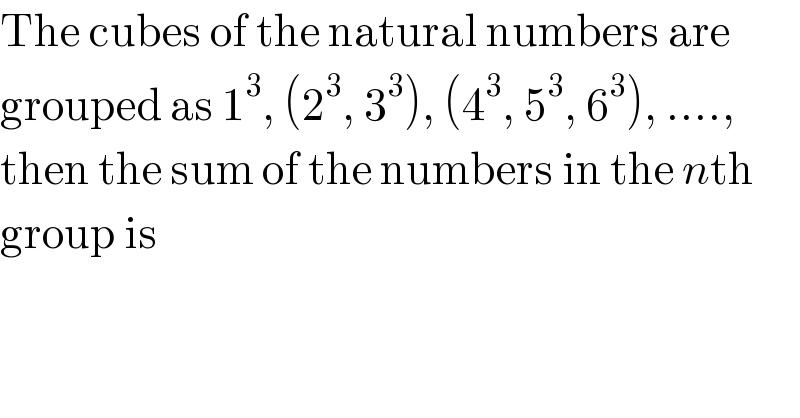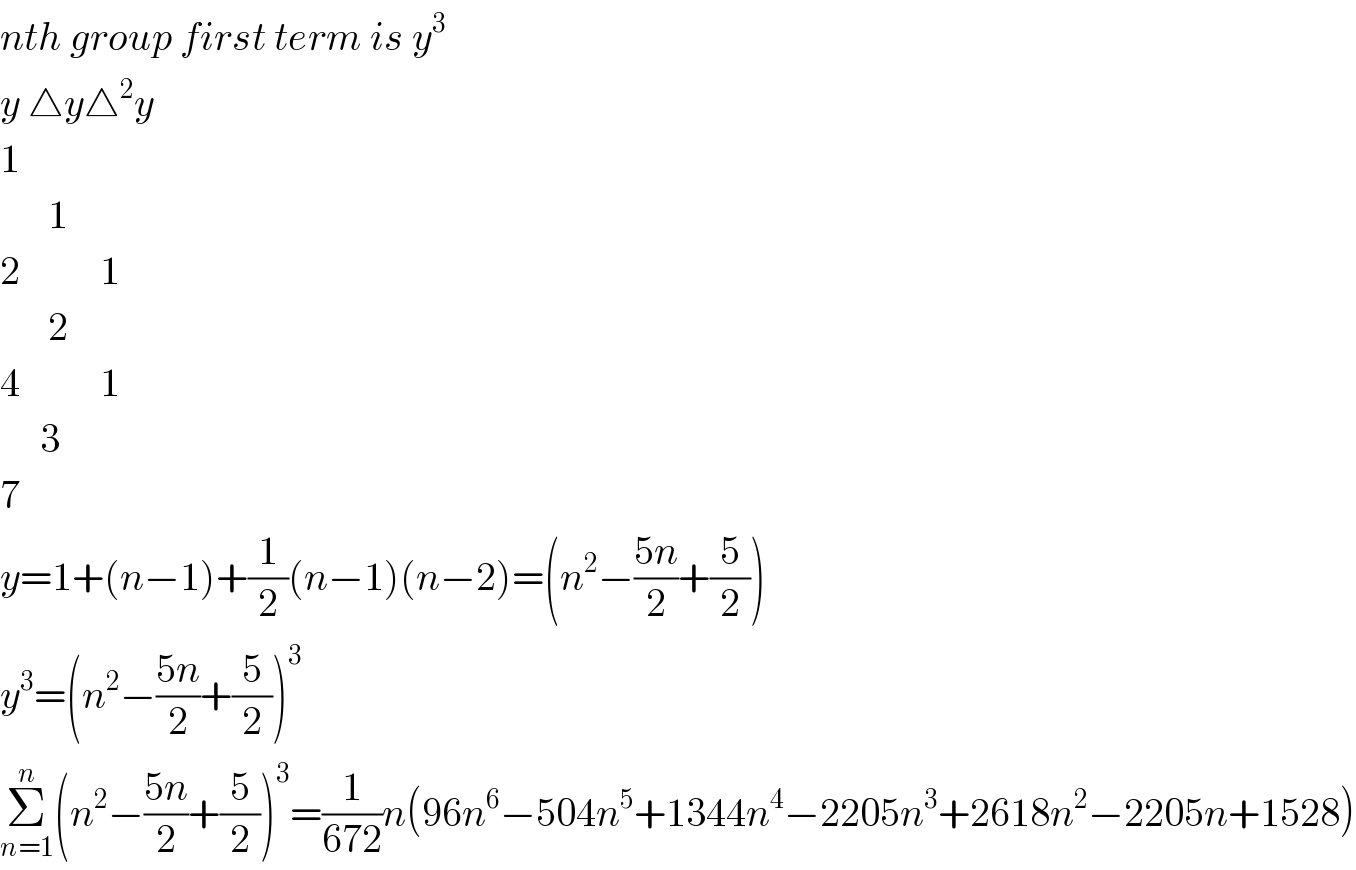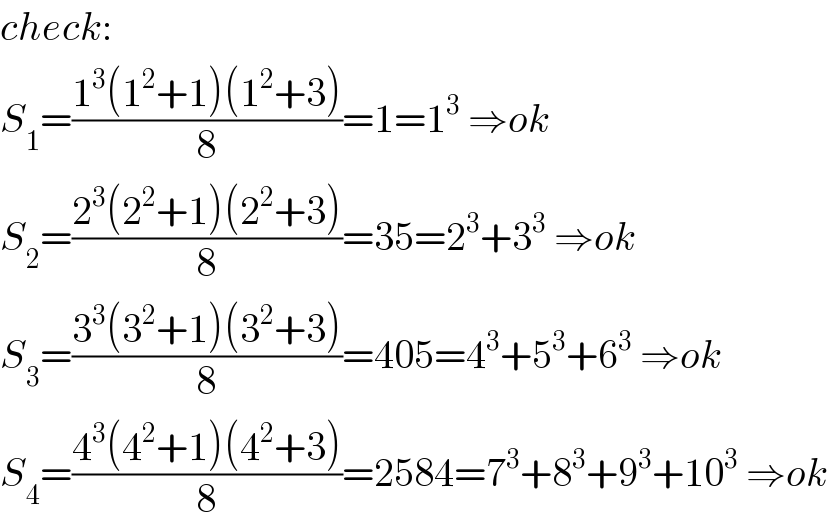
Question and Answers Forum
Question Number 110015 by ZiYangLee last updated on 26/Aug/20

Commented by Dwaipayan Shikari last updated on 26/Aug/20

Answered by Dwaipayan Shikari last updated on 26/Aug/20

Commented by aurpeyz last updated on 26/Aug/20

Commented by Dwaipayan Shikari last updated on 26/Aug/20

Commented by Dwaipayan Shikari last updated on 26/Aug/20
https://en.m.wikipedia.org/wiki/Interpolation
Commented by aurpeyz last updated on 27/Aug/20

Answered by mr W last updated on 27/Aug/20
![1+2+3+...+(n−1)=(((n−1)n)/2) the sum of the nth group is: S_n =Σ_(k=(((n−1)n)/2)+1) ^((((n−1)n)/2)+n) k^3 =Σ_(k=1) ^((((n−1)n)/2)+n) k^3 −Σ_(k=1) ^(((n−1)n)/2) k^3 =[(1/2)((((n−1)n)/2)+n)((((n−1)n)/2)+n+1)]^2 −[(1/2)((((n−1)n)/2))((((n−1)n)/2)+1)]^2 =((n^2 [(n+1)^2 (n^2 +n+2)^2 −(n−1)^2 (n^2 −n+2)^2 )/(64))] =((n^3 (n^2 +1)(n^2 +3))/8)](Q110054.png)
Commented by mr W last updated on 26/Aug/20

Commented by ZiYangLee last updated on 27/Aug/20

